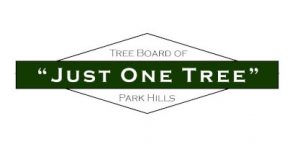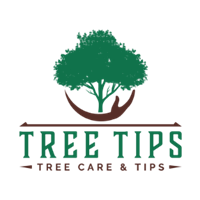Tree Board

TREE BOARD NEWS
City of Park Hills
Tree Board Mission Statement
It is the Mission of the Park Hills Tree Board to maintain and grow our community’s Tree Canopy while maintaining the integrity and historical appearance of our City and through such efforts increase the enjoyment and economic value to our residents and home owners.
Priorities
Present an Annual Plan & Budget to City Council in March of each year.
- Achieve the Tree City USA designation annually from the Arbor Day Foundation and the Kentucky Department of Forestry.
- Ensure all programs and resources are focused on increasing our City’s Tree Canopy.
- Identify and take advantage of all potential funding grants and resources.
- Communicate and Educate Park Hills residents on the economic benefits of a healthy Tree Canopy.
Please click here to view the latest tree survey by the University of KY
FREE TREES FOR PARK HILLS
On Arbor Day Saturday, October 5, 2024, Park Hills will once again be providing Free Trees to Park Hills homeowners. The trees are 6 feet, or more, in height and indigenous to Kentucky. The event will take place in Trolley Park from 10 AM until 2 PM, or until all trees are gone.
Species of trees.
Pin Oak, Sawtooth Oak, Burr Oak, Red Oak, Swamp White Oak, Chinkapin Oak, Quick Fire Hydrangea Tree, Bald Cypress, Dawn Redwood, Tulip Poplar, Ginkgo, Rainbow Pillar Serviceberry, Yellowwood, Red sunset Maple, October Glory Maple, Flowering Dogwood, Birch, Black Gum and Sourwood.
BAETEN’S NURSERY & GREENHOUSE
20% TREE DISCOUNT PROGRAM
Baeten’s Nursery & Greenhouse is offering each fall a 20% discount on Trees and Shrubs. Baeten’s is Park Hills official nursery and they provide great service to our community. See baetensnursery.com for a comprehensive list of the nursery’s flowers, trees and shrubs.
(tips on planting and caring for trees)
New Research on the Importance of Trees!
Why Should I Fertilize My Tree?
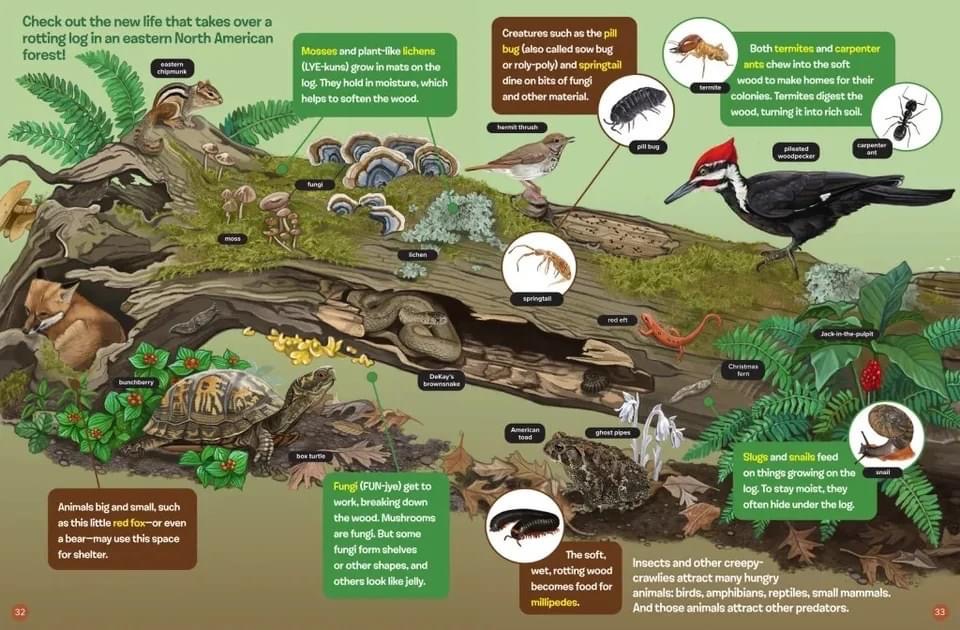
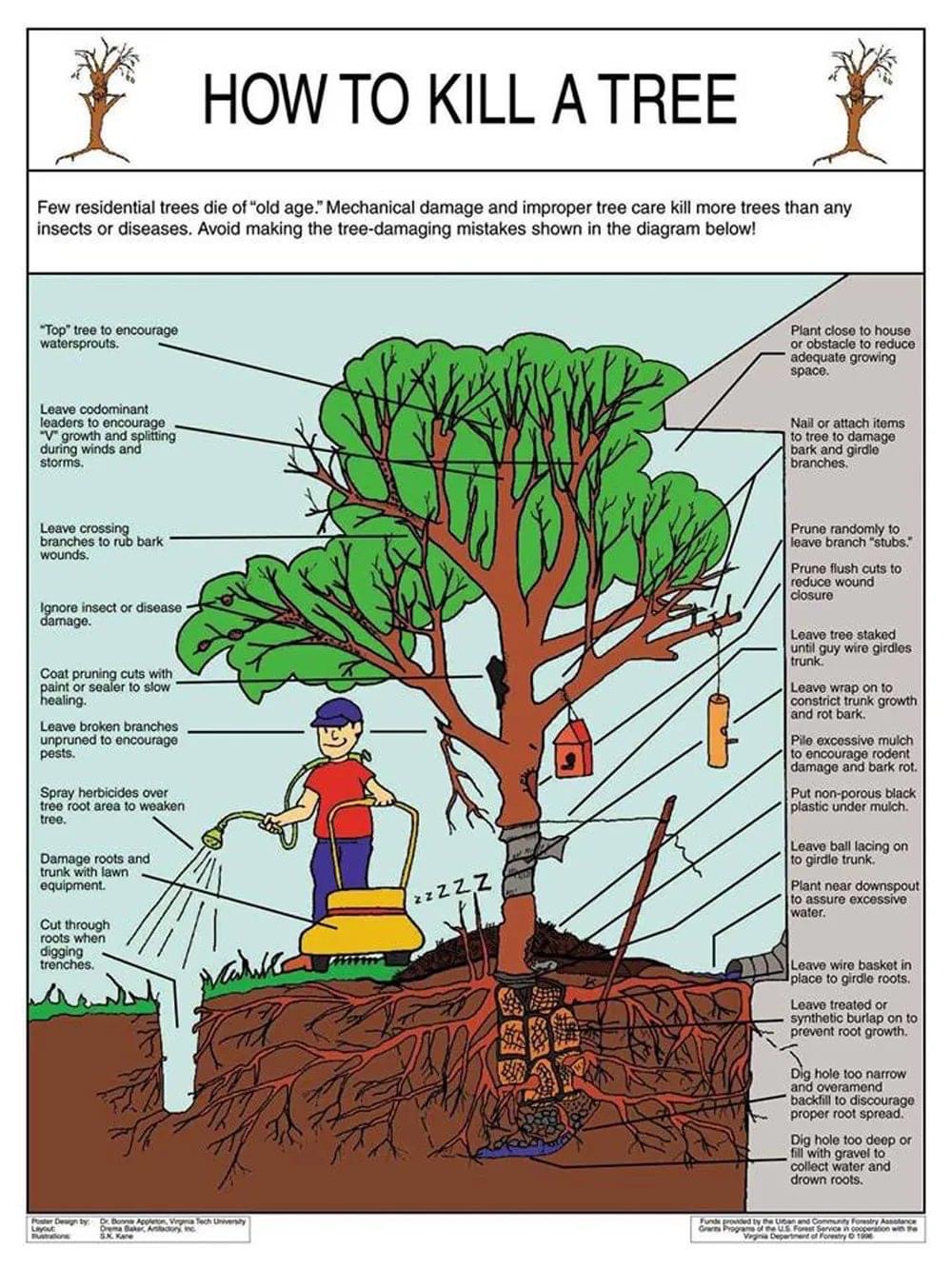
The Power of One Tree - The Very Air We Breathe!
On Saturday, March 21, the U.S. Forest Service will celebrate the United Nation’s International Day of Forests. With such an important worldwide recognition of all forests do for us humans, the Forest Service would like folks to ask themselves: Do I really know how much trees contribute to my daily life?
Or, in another words, what is the power of one tree?
Just as we humans are comprised of many parts functioning together allowing us to do wondrous things, the anatomy of a tree is just as wondrous, empowering them with super hero qualities.
What am I talking about? A tree has the ability to provide an essential of life for all living things on our planet – oxygen, and the power to remove harmful gases like carbon dioxide making the air we breathe healthier.
Here is how it works:
To keep it simple a tree is comprised of its leaves, stems, trunk and its roots. When you look at a tree, note that about five percent of the tree is comprised of its leaves, 15 percent its stems, 60 percent goes into its trunk and 20 percent is devoted to its roots.
Here is the super hero part. Through a process called photosynthesis, leaves pull in carbon dioxide and water and use the energy of the sun to convert this into chemical compounds such as sugars that feed the tree. But as a by-product of that chemical reaction oxygen is produced and released by the tree. It is proposed that one large tree can provide a day’s supply of oxygen for up to four people.
Trees also store carbon dioxide in their fibers helping to clean the air and reduce the negative effects that this CO2 could have had on our environment. According to the Arbor Day Foundation, in one year a mature tree will absorb more than 48 pounds of carbon dioxide from the atmosphere and release oxygen in exchange.
So next time you take a deep breath of air give credit to a tree or hug a tree in thanks for what it gives us – the very air we breathe.
PROPER TREE PRUNING TIPS
PROPER TREE PRUNING TIPS
Pruning plays a very important part in the maintenance of strong and healthy urban landscape trees. The need for pruning could be reduced by planting the right tree in the right place. Pruning should begin while the tree is young; this will cut down on the problems that may occur in the future. The removal of heavy limbs or the climbing of large trees should be left for certified arborists.
Reasons to Prune an Urban Landscape Tree
Safety: Removing branches that threaten to fall and cause personal injury or property damage or block sight of traffic on city streets can increase safety. Dangerous branches are dead, diseased or injured. Healthy branches are not dangerous, even if they hang over a house, walkway, etc. Healthy trees are very strong.
Health: Removal of dead, diseased, insect-infested or injured branches should be done as soon as possible. This helps to reduce the chance that disease or infestation will spread. Pruning this wood correctly increases the chance of a safe wound closure. Crossed and rubbing branches should also be removed since they create wounds that are havens for insects and diseases.
Aesthetics: Pruning can be done to enhance the beauty of the tree’s natural form. Open-grown trees in the landscape do very little self-pruning. Flower and fruit production can also be enhanced by pruning.
When to Prune
The best time to prune limbs is during the late winter or early spring. This allows maximum wound closure during the growing season and reduction of disease transmittal. Please note that some tree species have a habit of “bleeding” when sap is rising in early spring and pruning would be best performed at another time (i.e. maples).

Dead Branches: Cut the branch just beyond the branch bark ridge and the branch collar (which will continue to grow even after the branch is dead). Cut large branches with the three-step method below, so the limb does not make a large tear in the trunk.
Living Branches: Small limbs can be cut with sharp, bypass-type hand pruners. Support limb with one hand to avoid bark tear. The clean cut should be made just outside of the branch collar.
Large Branches: If a limb is too large to support with your arm, use a pruning saw and make a three-step pruning cut.
- First, make a shallow notch on the underside of the branch.
- Then, make second cut outside of the first cut, leaving a stub.
- Cut the stub just outside of the branch collar.
Basic Rules of Pruning
- Examine trees on a regular basis to determine if they need to be pruned. Proper pruning of leaves at an early age can reduce the need for future maintenance.
- Never remove more than one-third of the live crown of a tree.
- Properly prune dead, dying, diseased and weakly-attached limbs and sprouts.
- Prune V-crotches; leave branches with wide angles. The ideal branch angle should be at two or 10 o’clock.
- Remove multiple leaders and crossed branches.
- Never leave stubs or flush cuts.
- Do not use tree or wound paint.
Kentucky Department of Forestry Tree Planting Tips
Kentucky Department of Forestry Tree Planting Tips
Proper species selection, proper planting location and proper planting technique are vital to the survival of any trees you plant. Planting a tree correctly involves more than quickly purchasing a tree, digging a hole barely big enough for that tree and walking away. To ensure that a newly planted tree will have a long, healthy life, there are several factors to consider.
One very important thing to think about when planting is the time of year. People often think about planting trees in the spring and summer months when trees are in flower, full of fruit or are covered with beautiful leaves. However, the ideal time to plant is during the tree’s dormant season, after leaf drop in the fall and before bud-break in the spring. This time period is the least stressful to the tree because it is not actively trying to grow.
Before purchasing the tree, there is homework to do. One of the most important things to do is to thoroughly research the tree species before the purchase and planting. The end goal is to plant the right tree in the right place. To ensure this, consider the following:
Environmental Factors
Research how your tree will handle the following factors of your potential site: minimum temperature, available moisture, soil type, amount of light, pollution and soil compaction.
Tree’s Purpose
Why are you planting this tree? Consider your goal and find the species that suit your purpose best. Such purposes include specimen planting, shade, aesthetics, wildlife, windbreaks and screens.
Size
The potential height and width of your tree is one of the most important factors to consider. All too often, urban trees are cut down because “the tree got too big!” The truth is, the tree didn’t get too big, it was planted in the wrong place. Large trees can lift sidewalks, grow into pipes or utility lines, block windows, views and solar panels and shade gardens.
Crown Shape
What form will your tree have? What shape suits you best?
Now that you have thoroughly researched your tree species, it is time to plant the tree correctly. A good planting job will minimize trauma and transplant shock, which could result in slow growth, reduced vigor or death.
Nine Steps for Planting Containerized or Balled and Burlapped Trees
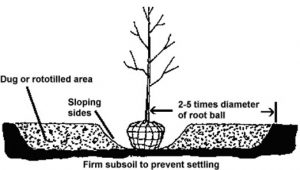
- Shallow, broad planting hole: The hole should be dug to the depth of the root ball, and three to five times the diameter of the ball. Place the tree into this hole by holding the ball, not the trunk.
- Position the tree: Balance the tree, making sure that it is straight and at the correct height (tree should be planted at the same depth that it was growing in the nursery).
- Remove materials: Remove the top portion of wire basket or peel back the top portion of the natural burlap. If there is any plastic string or plastic burlap, remove now. Plastic burlap and twine will not break down in the soil, as will natural burlap, and will actually girdle the tree, causing the tree to eventually die.
- Fill hole: Fill the hole with about one-third of the soil that you just dug out to make the hole and gently pack around the root ball. Continue to fill the rest of the hole, while adding water to remove air pockets. Do not add fertilizer for the first year.
- Prune: At this time, prune only dead or broken branches, don’t try to prune for shape. Wound paint is not necessary.
- Tree Wrap: Remove any tree wrap that was used for shipping the tree.
- Staking: Properly placed and planted trees rarely need to be staked. If staking is necessary, make absolutely certain that the stakes are removed at the end of the first year. At no time should the stakes or the binding twine rub the tree. This situation can cause wounds allowing opportunistic insects to invade.
- Mulch: Place a 3-inch to 4-inch layer of mulch in a 3-foot to 4-foot diameter circle under the crown of the tree. Pull mulch away from tree trunk so that heat and moisture are not trapped.
- Watering: Make sure that the newly planted tree gets at least 1 inch of water (either from rain or your garden hose) every week the first year, 1 inch of water every two weeks the second year and 1 inch of water every three weeks the third year.
Planting Bare Root Seedlings
It is best to plant bare-root trees immediately, in order to keep the fragile roots from drying out. If you can’t plant because of weather or soil conditions, store the trees in a cool place and keep the roots moist.
- Unpack tree and soak in water three to six hours. Do not plant with packing materials attached to roots, and do not allow roots to dry out.
- Dig a hole, wider than necessary, so the roots can spread without crowding. Remove any grass within a 3-foot circular area. To aid root growth, turn soil in an area up to 3 feet in diameter.
- Plant the tree at the same depth it stood in the nursery, without crowding the roots. Partially fill the hole, firming the soil around the lower roots. Do not add soil amendments (fertilizers or peat moss).
- Shovel in the remaining soil. It should be firmly, but not tightly, packed with your heel. Construct a water-holding basin around the tree. Give the tree plenty of water.
- After the water has soaked in, place a 2-inch-deep protective mulch area 3 feet in diameter around the base of the tree (but not touching the trunk).
- Water the tree generously every week (1 inch of water) during the first year.
Why “Plant Just One Tree”
Why “Plant Just One Tree”
Reduce Your Heating and AC costs…Trees shade your home in the summer months and block wind in the winter months, saving you money on heating and cooling.
Improve Your Privacy…Trees increase your privacy. Privacy is also one of the desired attributes for home buyers, thus making your property more desirable.
Increase Your Property Value… Numerous studies have shown that trees can increase property values up to 15%. Home buyers are drawn to the shade, air quality improvements, and general character that mature trees give to a property.
Protect Your Environment…Not only can trees reduce air pollution, but they can also reduce storm runoff and reduce noise pollution.
JUST ONE TREE…..MAKES A HUGE DIFFERENCE!
Tree Tips
We love our city because of our majestic trees. What do we need to do to ensure our trees are healthy? This Spring, please follow these simple steps to maintain the beauty of our tree canopy in Park Hills: Cut any vines growing at the base of the tree. Ivy and honeysuckle can literally suck the life out of a tree. Cut and remove any vines growing at the base of your tree in two places OR remove at least two inches where you make your cut, as the vines can grow back together. Vines provide niches and ecosystems for destructive insects. Trust us, get rid of the vines! Your tree will thank you for years and years to come.
1) Properly water. Just like any other plant, you need to water trees! If it hasn’t rained for several weeks, check to see if your tree needs a drink. Usually, mature trees need one inch of water a week. New trees require somewhere between 4 to 10 gallons each week during the first growing season or two.
2) Mulch. Mulch insulates tree roots, protects them from lawn mower cuts, and helps prevent dry soil. Help your tree reap these benefits by removing grass underneath the tree and spreading 2-to-4 inches of mulch. Be careful not to use too much mulch and DO NOT cover the base of the trunk! Trees need to breathe at the root base. In addition, take care with the mulch that you use. Acid-loving trees (dog woods, pines, oaks) really like pine needles or peat moss.
3) Fertilize. In the forest, natural plant materials feed the soil around trees. But in our yards, we rake and remove all those natural nutrients, like leaves and grass clippings. Fertilizer solves that problem. Apply a slow-release fertilizer regularly to replenish nutrients in the soil. Also, test your soil periodically to see if any elements are missing or in short supply.
4) Prune. Proper trimming improves trees’ structure while also removing any deadwood holding them back. Do major pruning when the tree is dormant and doesn’t have any leaves (if possible). Then, in summer, focus on tidying up and clearing out small, dead or damaged twigs.
5) Book checkups. Scheduling your annual checkup? Make an appointment for your tree, too! Spotting signs of pests or diseases early can make all the difference. ISA Certified Arborists® look for red flags like discolored leaves, cankers, holes, and more. Then, they provide a plan of action on how to help.
Information provided by Davey: Proven Solutions for a Growing World
How to Plant Saplings and Seedlings and Care for a Tree
TREE BOARD
Your Park Hills Tree Board:
Mike Conway – Chairman
Pat Flannery – Vice Chairman
Sally Soderlund – Secretary
Tony Darin – Treasurer
Sara Ahlrichs – Marketing & Communications
Kathleen Laurin – Treasurer Emeritus & Advisor
Marty Grimes, Mike Mahoney and Dr. Joseph Daugherty – Members
The Tree Board has the goal to plant 1,000 trees in Park Hills over the next three years to reforest our community. Trees not only make our city more beautiful; they also remove pollutants, reduce energy costs, and increase property values. We ask each homeowner to take advantage of the programs we offer and plant just one tree to help us build our beautiful tree canopy.
Upcoming Meetings:
The tree board usually meets at 7:00 PM every first Thursday of the month. Email the city clerk, jalig@parkhillsky.net, for meeting location details.
Tree Board Meetings
June 5 (no meeting)
July 3 (no meeting)
August 7
September 4
October 2
November 6
December 4
Tree Ordinaces
Meeting Minutes
March 6, 2025
DRAFT coupon (attachment)
September 5, 2024
July 3, 2024
May 2, 2024
September 14, 2023
July 6, 2023
March 27, 2023
November 3, 2022
October 5, 2022
September 1, 2022
July 7, 2022
April 7, 2022
November 4, 2021
September 2, 2021
August 5, 2021
June 3, 2021
April 8, 2021
March 4, 2021
January 7, 2021
October 3, 2020
September, 2020
April/May, 2020
March 16, 2020
January 7, 2020
June 3, 2018
March 3, 2018
January 6, 2018
December 2, 2017
November 4, 2017
October 7, 2017
June 3, 2017
May 6, 2017
February 3, 2017
January 7, 2017
November 5, 2016
October 1, 2016
August 6, 2016
May 7, 2016
April 2, 2016
March 5, 2016
August 2, 2013
April 6, 2013
March 1, 2013
February 2, 2013
January 5, 2013
November 3, 2012
